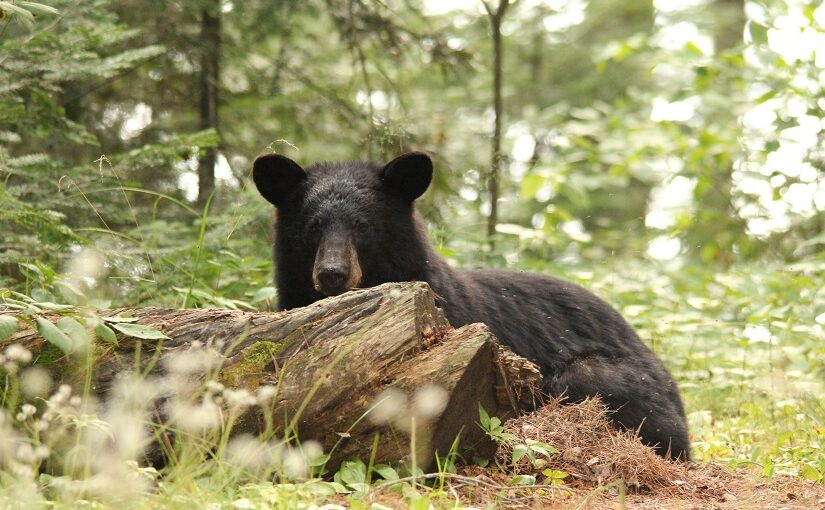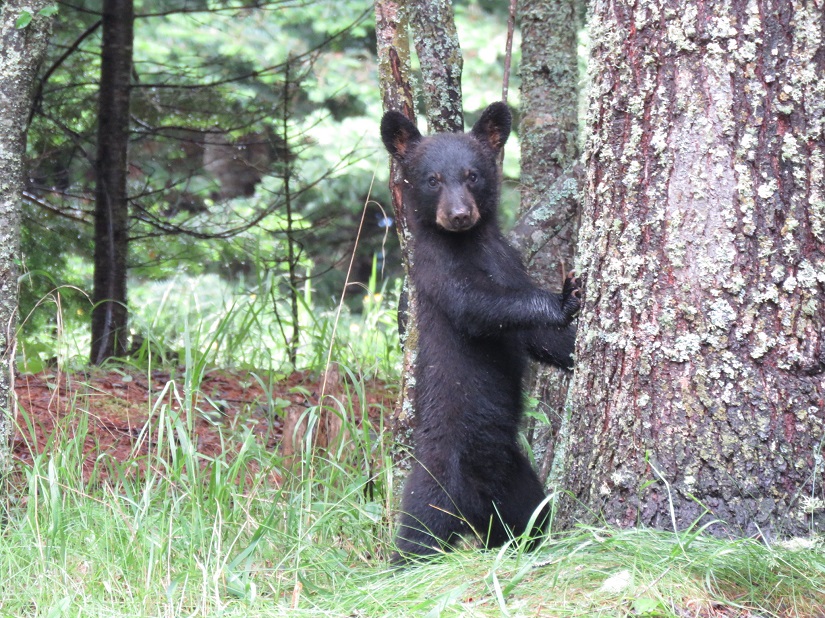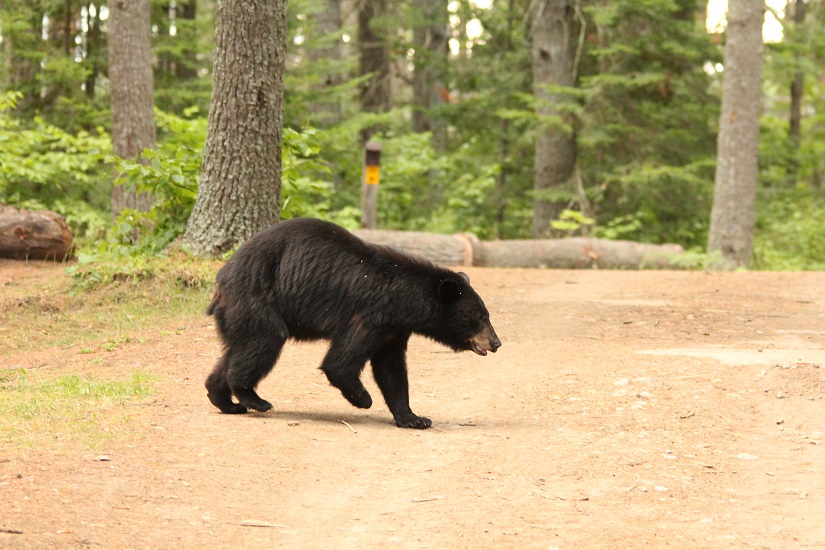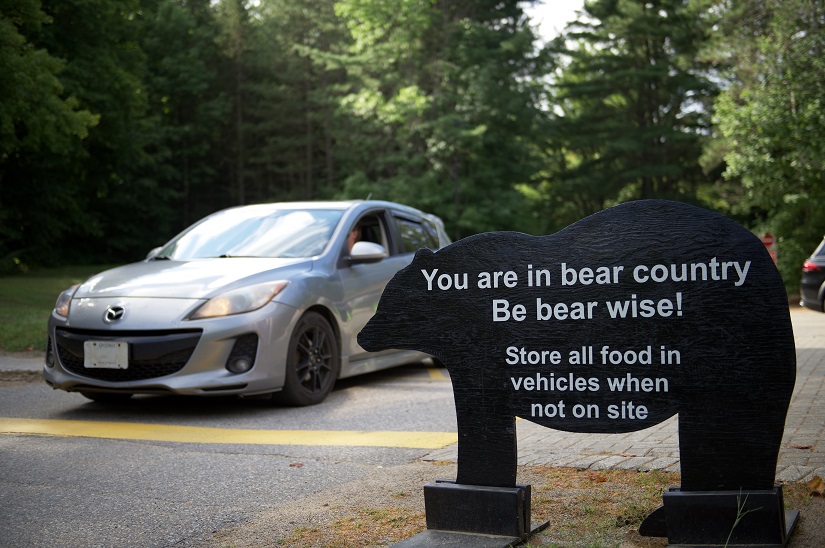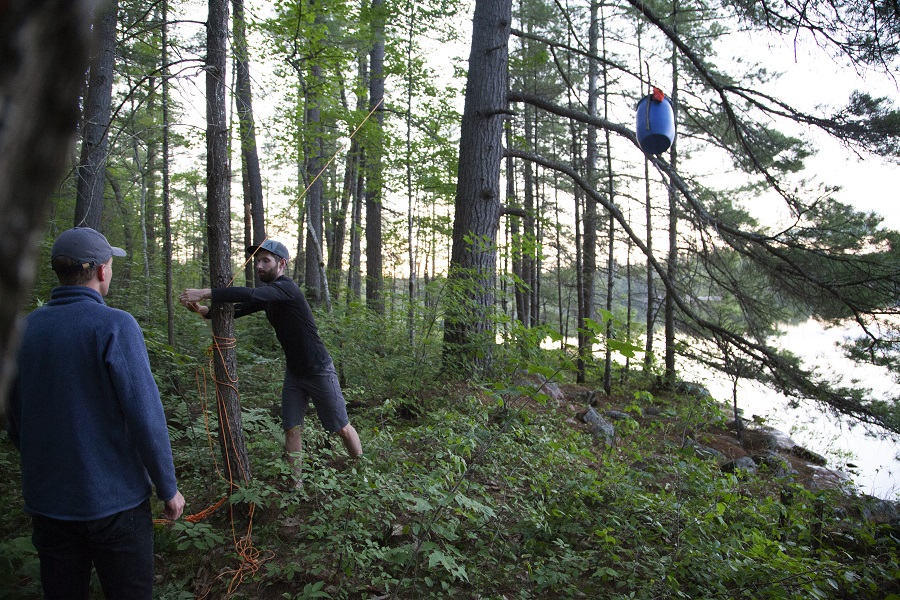Planning a visit and wondering whether you’ll see a Black Bear? Tune in to our monthly Black Bear feature where our ecologists let you know common bear behaviour for the month or season.
Love is in the air in June for some Black Bears!
It’s mating season, which runs from about mid-May through July.
It’s more important than ever to practice bear safety throughout your visit!
Here’s what our bears are up to this month:
Time to make a cub!
Bears reach sexual maturity around age 5, or sometimes later in more northern areas of the province.
Most female bears breed once every two years when they reach maturity. Black Bear moms who had cubs last year will be chasing these now yearlings away so they can breed again.
For males, it can take longer to successfully breed. They need to grow large to fend off other suitors and attract potential mates.
It takes time to reach the size needed to be a successful male Black Bear in breeding season, and some male bears may be 8 to 10 years old before they win the right to mate.
Male bears are travelling huge distances and fending off challengers. This requires large amounts of energy.
Males can have a home range of 150 km2 or more, which encompasses the range of several females.
Post-breeding habits
Once bears breed, pregnant Black Bears do not start to gestate right away.
They go through a process called delayed implantation. The pause button is pressed on the pregnancy, and the female bear does not begin to gestate her embryos until she enters the den.

She must have gained enough weight to have a successful pregnancy and give birth. Studies have shown that female bears of at least 150 pounds at den entrance in the fall will successfully gestate and give birth to cubs.
Black Bear moms with young-of-the-year cubs are busy trying to find food and stay away from other bears. They are still using mostly fat reserves from last year to make the milk needed to nurse the cubs.
The low-calorie spring foods will fill her tummy, but not necessarily provide enough calories to thrive and put on weight.
The cubs, on the other hand, are growing every day, becoming more playful with each other, and exploring their environment while learning all sorts of lessons from watching their mom.
A female Black Bear raises her cubs for 17-18 months. After that, they are left to fend for themselves.
Finding food in June
All this bear activity is happening while high-calorie food is scarce on the landscape.
In June, natural foods for bears consist mostly of vegetation. Delicious ripe berries are right around the corner, and start to become available in more southern areas of the province in mid/late June.
Black Bears are still relying on their fat reserves from last year to provide energy.
In fact, bears only have about four months of the year, July to October, when natural foods are abundant, to pack on the pounds.
A legendary sense of smell
If the best scent dogs in the world are the peewee league of smelling ability, Black Bears are the elite all-stars.
They can smell food from kilometres away. Not only that, but bears have excellent memories. They will return to locations where they have found food in the past.
Bears will remember a bountiful blueberry field, where pin cherries are abundant, or where suckers spawn in the spring. They will return year after year to those food sources.
They will also remember the location of places like campgrounds if they are able to access food there.
This is why Ontario Parks has regulations for proper storage of wildlife attractants. It is for the safety of park visitors, and wildlife alike.
If a bear is able to find food in a campground, or at a backcountry campsite, it may return again. If the bear keeps getting food when it returns, it can lose its natural fear of humans.
What can you do?
With millions of visitors every year, Ontario Parks relies on visitors to take simple proactive steps to make sure their actions do not lead to a bear becoming human-habituated or food-conditioned.
Don’t stash snacks, or anything else smelly an animal might investigate, in your tent. It’s an open invitation for all sorts of wild critters.
Not only may raccoons, chipmunks, squirrels, and insects smell and attempt to find the treats, but a bear might as well.
Store any wildlife attractants you have in the trunk of your car, in a bear-proof container, or hung well out of reach in between two trees.
Be Bear Wise
Black Bears are amazing animals.
Let’s all do our best to respect and coexist with the Black Bears who call our protected areas home!
